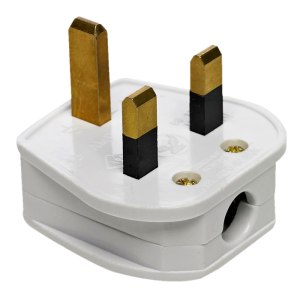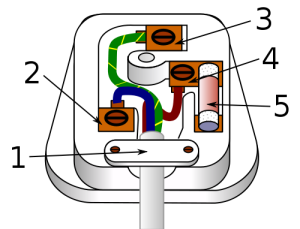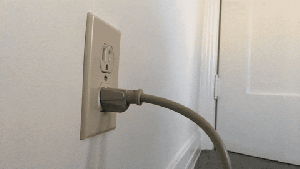

Lets talk about plugs
source link: https://blog.ldodds.com/2019/07/08/lets-talk-about-plugs/
Go to the source link to view the article. You can view the picture content, updated content and better typesetting reading experience. If the link is broken, please click the button below to view the snapshot at that time.

Lets talk about plugs
Leigh Dodds Data July 8, 2019July 8, 2019
4 Minutes
This is a summary of a short talk I gave internally at the ODI to help illustrate some of the important aspects of data standards for non-technical folk. I thought I’d write it up here too, in case its useful for anyone else. Let me know what you think.
We benefit from standards in every aspect of our daily lives. But because we take them for granted, we don’t tend to think about them very much. At the ODI we’re frequently talking about standards for data which, if you don’t have a technical background, might be even harder to wrap your heard around.
A good example can help to illustrate the value of standards. People frequently refer to telephone lines, railway tracks, etc. But there’s an example that we all have plenty of personal experience with.
Lets talk about plugs!
You can confidently plug any of your devices into a wall socket and it will just work. No thought required.
Have you ever thought about what it would be like if plugs and wall sockets were all different sizes and shapes?
You couldn’t rely on being able to consistently plug your device into any random socket, so you’d have to carry around loads of different cables. Manufacturers might not design their plugs and sockets very well so there might be greater risks of electrocution or fires. Or maybe the company that built your new house decided to only fit a specific type of wall socket because its agree a deal with an electrical manufacturer, so when you move in you needed to buy a completely new set of devices.
We don’t live in that world thankfully. As a nation we’ve agreed that all of our plugs should be designed the same way.
That’s all a standard is. A documented, reusable agreement that everyone uses.
Notice that a single standard, “how to design a really great plug“, has multiple benefits. Safety is increased. We save time and money. Manufacturers can be confident that their equipment will work in any home or office.
That’s true of different standards too. Standards have economic, policy, technical and social impacts.
Open up a UK plug and it looks a bit like this.
Notice that there are colours for different types of wires (2, 3, 4). And that fuses (5) are expected to be the same size and shape. Those are all standards too. The wiring and voltages are standardised too.
So the wiring, wall sockets and plugs in your house are designed affording to a whole family of different standards, that are designed to work with one another.
We can design more complex systems from smaller standards. It helps us make new things faster, because we are reusing existing work.
That’s a lot of time and agreement that we all benefit from. Someone somewhere has invested the time and energy into thinking all of that through. Lucky us!
When we visit other countries, we learn that their plugs and sockets are different. Oh no!
That can be a bit frustrating, and means we have to spend a bit more money and remember to pack the right adapters. It’d be nice if the whole world agreed on how to design a plug. But that seems unlikely. It would cost a lot of time and money in replacing wiring and sockets.
But maybe those different designs are intentional? Perhaps there are different local expectations around safety, for example. Or in what devices people might be using in their homes. There might be reasons why different communities choose to design and adopt slightly different standards. Because they’re meeting slightly different needs. But sometimes those differences might be unnecessary. It can be hard to tell sometimes.
The people most impacted by these differences aren’t tourists, its the manufacturers that have to design equipment to work in different locations. Which is why your electrical devices normally has a separate cable. So, depending on whether you travel or whether you’re a device manufacturer you’ll have different perceptions of how much a problem that is.
All of the above is true for data standards.
Standards for data are agreements that help us collect, access, share, use and publish data in consistent ways. They have a range of different impacts.
There are lots of different types of standard and we combine them together to create different ways to successfully exchange data. Different communities often have their own standards for similar things, e.g. for describing metadata or accessing data via an API.
Sometimes those are simple differences that an adapter can easily fix. Sometimes those differences are because the standards are designed to meet different needs.
Unfortunately we don’t live in a world of standardised data plugs and wires and fuses. We live in that other world. The one where its hard to connect one thing to another thing. Where the stuff coming down the wires is completely unexpected. And we get repeated shocks from accidental releases of data.
I guarantee that in every user research, interview, government consultation or call for evidence, people will be consistently highlighting the need for more standards for data. People will often say this explicitly, “We need more standards!”. But sometimes they refer to the need in other ways: “We need make data more discoverable!” (metadata standards) or “We need to make it easier to safely release data!” (standardised codes of practice).
Unfortunately that’s not always that helpful because when you probe a little deeper you find that people are talking about lots of different things. Some people want to standardise the wiring. Others just want to agree on a voltage. While others are still debating the definition of “fuse”. These are all useful and important things. You just need to dig a little deeper to find the most useful place to start.
Its also not always clear whose job it is to actually create those standards. Because we take standards for granted, we’re not always clear about how they get created. Or how long it takes and what process to follow to ensure they’re well designed.
The reason we published the open standards for data guidebook was to help communities get started in designing the standards they need.
Standards development needs time and investment, as someone somewhere needs to do the work of creating them. That, as ever, is the really hard part.
Standards are part of the data infrastructure that help us unlock value from data. We need to invest in creating and maintaining them like we do other parts of our infrastructure.
Don’t just listen to me, listen to some of the people who’ve being creating standards for their communities.
Recommend
About Joyk
Aggregate valuable and interesting links.
Joyk means Joy of geeK





